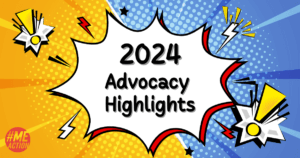The POTS and Beyond conference held in Salt Lake City this past weekend brought together experts in the field to educate physicians and patients on what is known about autonomic dysfunction. The neurology department of the University of Utah School of Medicine partnered with Dysautonomia International and Granger Medical to create this two-day event.
The first day was a CME course for clinicians to learn about POTS, followed by a second day geared toward patients, caregivers, and the general public. The event also included two patient panels and question/answer sessions with the experts.
The presenters represent a core group of POTS specialists from around the country:
- Melissa Cortez, DO, Neurology, University of Utah
- Laura A. Pace, MD, PhD, Gastroenterology, University of Utah
- Paola Sandroni, MD, PhD, Neurology, Mayo Clinic, Rochester, MN
- Brent P. Goodman, MD, Neurology, Mayo Clinic, Phoenix, AZ
- Satish Raj, MD, MSCI, Cardiology, University of Calgary
- Pradeep Chopra, MD, Pain Medicine, Brown Medical School, Providence, RI
- Glen A. Cook, MD, Neurology, Walter Reed National Military Medical Center, Bethesda, MD
- Craig A. Coleby, MD, Internal Medicine and Pediatric Sports Medicine, Granger Medical Clinic, Riverton, UT
- Chris Harper, DPT, Physical Therapy, private practice, Draper, UT
Structure of the CME course
The course for clinicians focused on the physiological process that occur in Postural Orthostatic Tachycardia Syndrome (POTS). Each speaker gave a brief introduction to their specialty (neurology, gastroenterology, cardiology) and then presented on the ways that dysautonomia impacts specific organ systems. The physicians in attendance were able to hear about the most current research from their peers. After each presentation, attendees had time to ask follow up questions. At the end of the day, six dysautonomia patients participated in a panel discussion that brought the lived experience of POTS to the attention of the clinicians in attendance.
Throughout this conference, several themes rose to the surface:
Theme 1: Believe the patient
The expert clinicians who were invited to speak all had one thing in common: they believe their patients. The experts and the patient panel made it clear that when a physician works from this framework, it is transformative. It does not provide an instantaneous cure for the patient, but it is a game-changer that removes many of the barriers patients experience with clinicians who operate from a practice of dismissal and delay. Each of the speakers at this conference noted that their professional practice starts with believing that POTS, EDS, and MCAS are physical conditions with objective evidence supporting their legitimacy. They listen as patients report their own history and symptoms, and they do not read the previous medical records from other physicians that may contain biased information or misdiagnoses.
From there, these doctors investigate possible treatments and common links with other conditions. The speakers made this mode of practice clear to the physicians in the audience, some of whom had been the very doctors who previously misdiagnosed the patients sitting on the patient panel. Hearing their medical colleagues document the pathophysiology and treatment options served as an important step toward preventing future misdiagnosis and neglect.
Theme 2: Don’t discount rare diseases
Throughout the conference, the experts repeated this key idea, urging clinicians to resist the urge to dismiss the possibility of a diagnosis just because it is unlikely. For example, Dr. Coleby left medical school with the assumption that he would never see a patient with POTS. When he recognized signs of POTS in a pediatric patient, he soon realized that there was no one to refer her to, and stepped up to address the issue himself.
In her presentation, Dr. Sandroni mentioned several conditions such as Chagas disease that are rare and not widely known; she emphasized that just because a condition is rare, clinicians should not assume they will never see it. She encouraged the clinicians in attendance to look closely at the reported symptoms, consider possible links to the autonomic system, run autonomic testing, and think through related diagnoses.
Theme 3: Look for related conditions
Each speaker focused on a specific topic in relation to POTS (such as cardiology or the gastrointestinal tract), but they all spoke about keeping possible co-morbid conditions in mind while assessing patients symptoms. For example, Dr. Cortez gave a case study of a patient whose tilt table test indicated mild orthostatic intolerance; before moving to a POTS diagnosis she explored a series of possibilities including anemia, autoimmunity, and CFS. Most speakers emphasized comorbidity with Ehlers-Danlos syndrome (EDS), mast cell activation syndrome (MCAS), and neuropathy, all of which were covered at length. Conditions such as lupus, diabetes, and chronic fatigue syndrome were cited less frequently but still made an appearance on the presentation slides. Myalgic encephalomyelitis was not referenced, indicating a greater need for cross-collaboration with ME specialists.
Theme 4: High need for primary care physicians who are proficient in autonomic dysfunction
The call-to-action from both days of the conference was clear: more primary care physicians need to be proficient in dysautonomia and autoimmune disease. One participant on the patient panel observed that other people with POTS see how well she’s doing after treatments with her physician but she has no one to refer them to – her physician is not taking new patients and the one other specialist in the state has a year-long waiting list.
For advocacy groups, this means organizing medical education courses and partnering with universities. For patients and allies, it means recruiting their primary care physicians who are open to learning about this field and personally inviting them to future conferences. For the physicians themselves, it means recognizing this need and stepping up. Patients are already committed to learning and researching these conditions; primary care physicians can be too.
To learn more:
- Search #POTSandBeyond2018 on Twitter.
- Watch recordings from past conferences hosted by Dysautonomia International. The POTS & Beyond Conference was not recorded, but the following videos are comparable to the presentations given there.
- Management of Gastrointestinal Symptoms in Dysautonomia – Dr. Laura Pace
- Diagnosis & Management of POTS, 2017 – Dr. Satish Raj
- Autoimmunity & Mast Cell Activation in Dysautonomia – Dr. Brent Goodman





3 thoughts on “POTS and Beyond Conference 2018”
Thanks for the fantastic tips!! it’s absolutely worth it!
Thanks for the fantastic tips!! it’s absolutely worth it!
Awesome! More conference on POTS that would benefit many. Thanks for sharing!
physician recruiter
Comments are closed.